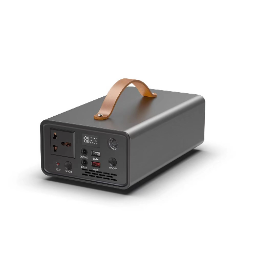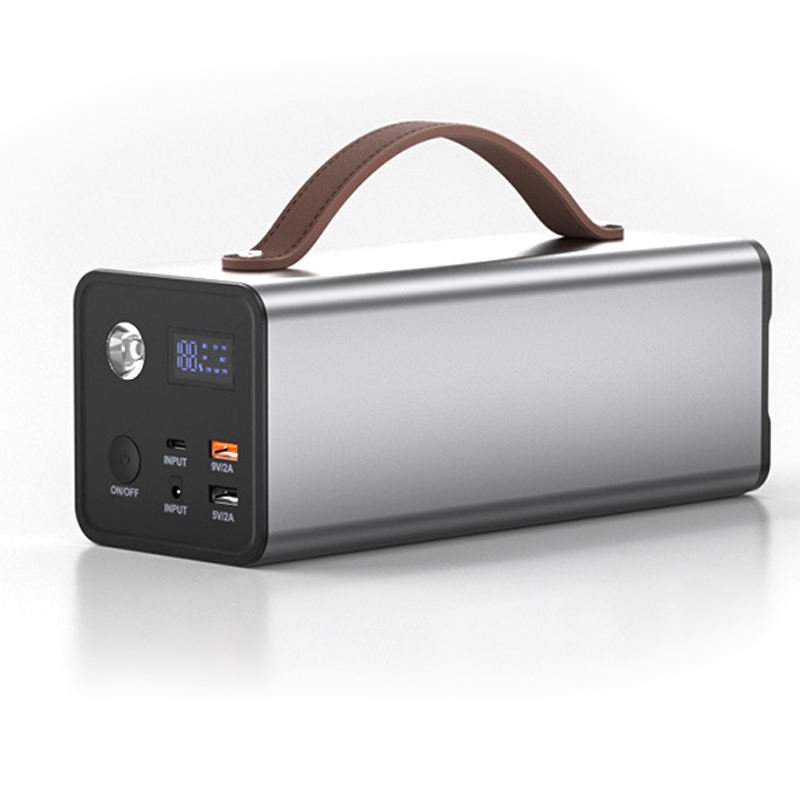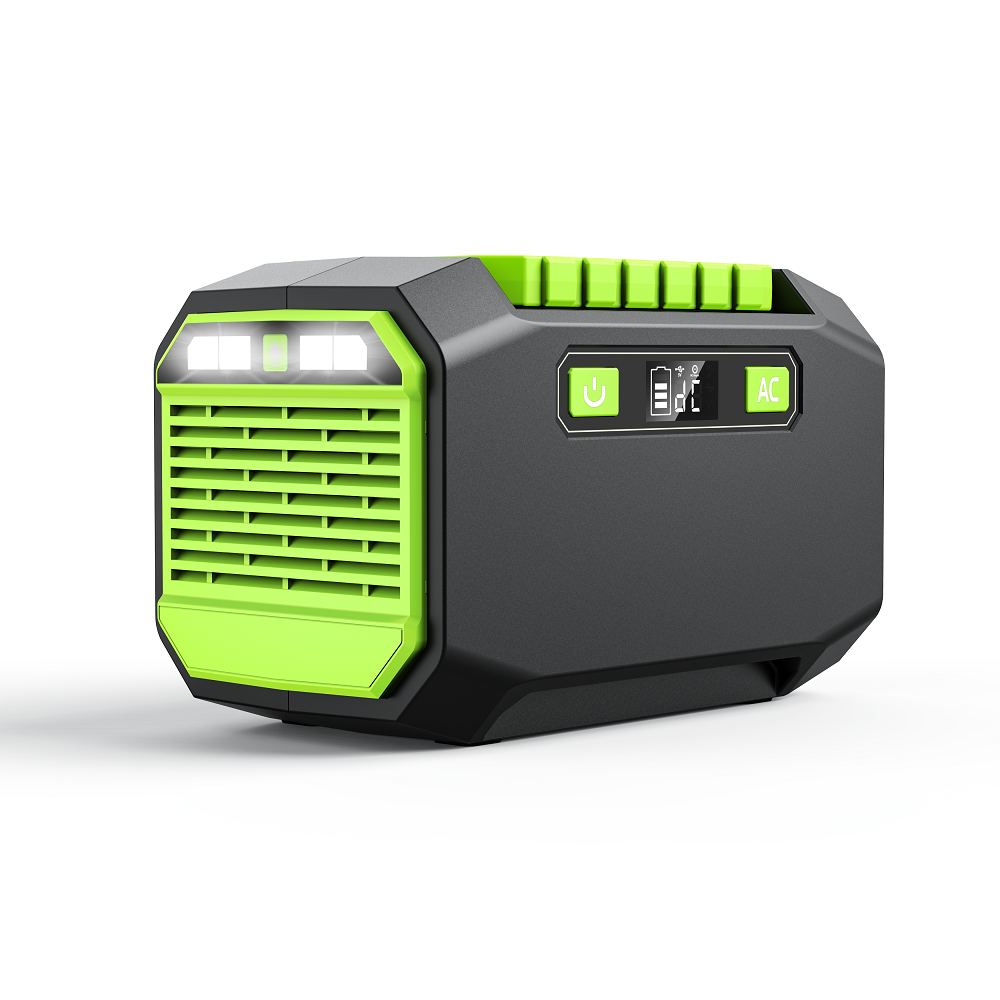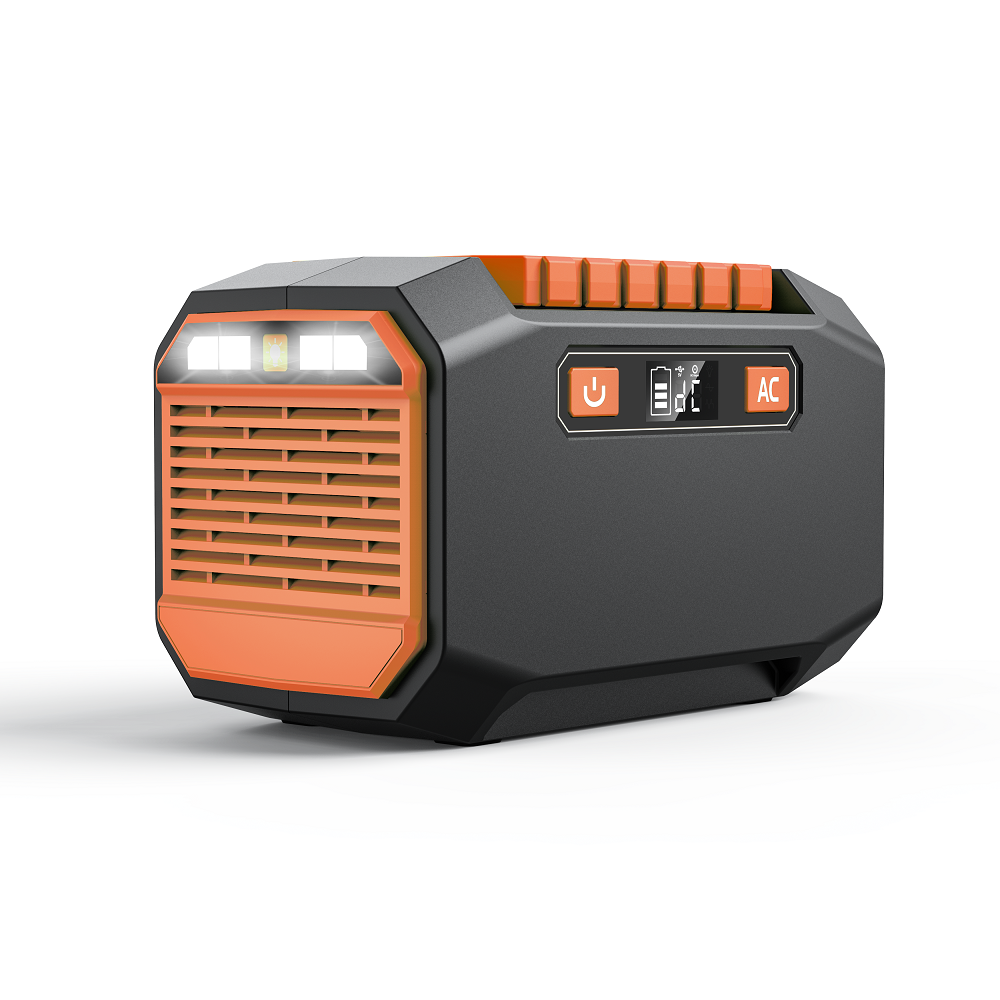What Can You Power with a Portable Power Station?
Portable power stations have revolutionized how we think about energy access in various situations, offering a convenient and reliable solution for powering a wide range of devices when conventional electricity sources aren’t available. These compact, battery-powered units are designed to store and deliver power on the go, making them perfect for anyone who needs access to electricity in remote locations or during power outages.
Portable power stations have become indispensable for various scenarios where access to electricity is limited or unavailable. Their importance can be seen in three main areas: outdoor activities, emergencies, and off-grid living.
| Scenario | Benefit | Examples |
|---|---|---|
| Outdoor Activities | Charge small devices | Smartphones, GPS, cameras, portable lights |
| Outdoor Activities | Power small appliances | Electric grills, coffee makers, fans |
| Outdoor Activities | Enhance entertainment | Speakers, mini projectors, laptops |
| Emergencies | Power essential devices | CPAP machines, communication devices, flashlights |
| Emergencies | Preserve food | Small refrigerators, coolers for food and medicine |
| Emergencies | Maintain safety | Security systems, smoke detectors |
| Off-Grid Living | Remote locations | Cabins, RVs, boats – for lights, laptops, tools |
| Off-Grid Living | Eco-friendly energy | Paired with solar panels for sustainable energy |
| Off-Grid Living | Freedom and flexibility | Power devices without being tied to a single location |

Understanding Portable Power Stations
A portable power station can be recharged through standard wall outlets, car chargers, or solar panels, providing a renewable energy solution. With capacities typically measured in watt-hours (Wh), these power stations can support various devices, from smartphones and laptops to small appliances such as mini-fridges and electric grills, as well as essential medical equipment like CPAP machines.
Types of power stations (lithium-ion vs. lead-acid, solar compatibility)
| Feature | Lithium-Ion Power Station | Lead-Acid Power Station | Solar Compatibility |
|---|---|---|---|
| Weight | Lightweight, more portable | Heavier, bulkier | Most lithium-ion models are compatible with solar panels |
| Battery Life | Longer lifespan (typically 500-2000 charge cycles) | Shorter lifespan (200-500 charge cycles) | Solar panels can recharge power stations during off-grid use |
| Energy Efficiency | More efficient, less energy loss during charge/discharge | Less efficient, higher energy loss | Increases flexibility with renewable energy, reducing dependence on grid power |
| Cost | Higher initial cost but better long-term value | Lower initial cost, but less value over time | Solar-compatible stations usually have ports for direct solar charging |
| Charging Time | Faster charging time | Slower charging time | Solar panel efficiency varies by sunlight conditions and panel size |
| Maintenance | Low maintenance, no memory effect | Higher maintenance, prone to sulfation | Requires additional solar panels and cables for setup |
| Eco-Friendliness | More eco-friendly due to longer battery life and solar compatibility | Less eco-friendly, uses more resources over time | Promotes green energy usage in off-grid and remote locations |
Power Rating (Wattage) and Capacity (Watt-Hours, Wh) Explained
Power Rating (Wattage)
Power rating, measured in watts (W), refers to the maximum power a portable power station can provide at any moment. This figure determines what kind of devices and appliances the power station can run. Higher wattage means the power station can handle more energy-intensive devices.
- Example: A power station with a 300W power rating can power devices like smartphones, laptops, and small fans, but it may struggle with higher-demand devices like a microwave or space heater, which might require 1000W or more.
Key Points:
- Devices with higher power demands (e.g., electric grills and refrigerators) need higher wattage.
- The wattage should match or exceed the power requirements of the device you want to run to avoid overloading the station.
Capacity (Watt-Hours, Wh)
Capacity, measured in watt-hours (Wh), tells you how much energy the power station’s battery can store. It reflects how long the power station can run on a particular device. A higher Wh rating means the power station can provide power for a longer time before needing to be recharged.
- Example: A power station with a capacity of 500Wh can theoretically run a 100W device for 5 hours (500Wh ÷ 100W = 5 hours).
Key Points:
- Higher Wh capacity allows you to run devices longer between charges.
- Power stations with larger capacities are ideal for running devices for extended periods or powering multiple devices simultaneously.
Example:
If you have a 500W power station with a 1000Wh capacity:
- It can run a 500W appliance (e.g., a small blender) for about 2 hours (1000Wh ÷ 500W = 2 hours).
- A 100W light could run for 10 hours (1000Wh ÷ 100W = 10 hours).
Small Electronics
| Device Category | Type of Device | Charging Capacity | Usage Considerations |
|---|---|---|---|
| Small Electronics | Smartphones & Tablets | Can charge a typical smartphone (3000mAh) 8-10 times with a 300Wh power station | Charging capacity depends on the phone/tablet’s battery size and the power station’s watt-hour rating. |
| Small Electronics | Laptops & E-readers | A 500Wh power station can charge a 60Wh laptop 8-9 times | Can power laptops for 4-5 hours; e-readers, due to lower energy consumption, last longer |
| Small Electronics | Cameras & Drones | A 300Wh power station can charge camera/drone batteries 5-6 times | Useful for charging in remote locations or during outdoor shoots for creative professionals |
Lighting & Small Appliances
| Device Category | Type of Device | Power Consumption (Average) | Usage Time (Based on Power Station Capacity) | Usage Considerations |
|---|---|---|---|---|
| Lighting & Small Appliances | LED Lights, Lamps, String Lights | 5-10W | A 300Wh power station can power LED lights for 30-60 hours | Ideal for camping, emergency lighting, or outdoor events |
| Lighting & Small Appliances | Fans & Mini Air Conditioners | 20-50W (Fans), 100-300W (Mini AC) | A 300Wh power station can power a fan for 6-15 hours; a Mini AC for 1-3 hours. | Useful during blackouts or for off-grid cooling, especially in summer |
| Lighting & Small Appliances | Portable Heaters | 500-1500W | A 500Wh power station can power a small heater for about 30-60 minutes (not ideal for long-term use) | Ensure proper ventilation, and use with caution due to high energy draw. |
Kitchen & Cooking Devices
| Device Category | Type of Device | Power Consumption (Average) | Usage Time (Based on Power Station Capacity) | Usage Considerations |
|---|---|---|---|---|
| Kitchen & Cooking Devices | Electric Kettles, Coffee Makers, Blenders | 800-1500W (Kettles), 600-1000W (Coffee Makers), 300-500W (Blenders) | A 500Wh power station can power an electric kettle for about 20-30 minutes, brew coffee 2-3 times, or run a blender for about 1-2 hours | High power draw devices; use for short bursts (e.g., boiling water, brewing coffee) |
| Kitchen & Cooking Devices | Mini-Fridges & Coolers | 50-100W | Depending on size and usage, a 500Wh power station can run a mini-fridge for 5-10 hours. | Can keep food and drinks cool for a camping trip or during a power outage |
| Kitchen & Cooking Devices | Portable Cooktops & Grills | 1000-1500W (Cooktops), 500-800W (Grills) | A 1000Wh power station can power a cooktop for about 40-60 minutes or a grill for 1-2 hours. | Shorter cooking times; ideal for quick meals or outdoor cooking setups |
Powering Medium-Sized Devices
| Device Category | Type of Device | Power Consumption (Average) | Usage Time (Based on Power Station Capacity) | Usage Considerations |
|---|---|---|---|---|
| Medium-Sized Devices | Televisions & Monitors | 50-150W (TV), 30-50W (Monitors) | A 500Wh power station can run a 100W TV for about 5-6 hours or a monitor for 8-12 hours. | Suitable for home entertainment or remote setups during camping trips |
| Medium-Sized Devices | CPAP Machines & Medical Devices | 30-60W | A 300Wh power station can power a CPAP machine for 5-10 hours, depending on the model and settings. | Reliable for overnight use, ideal for emergencies or off-grid living; solar charging helps extend usage |
| Medium-Sized Devices | Electric Tools & Equipment | 300-1000W (Power tools) | A 1000Wh power station can run a 500W power tool for about 2 hours | Great for construction sites, woodworking, or DIY projects in areas without grid power |
Larger Appliances (Depending on Station Capacity)
| Device Category | Type of Device | Power Consumption (Average) | Usage Time (Based on Power Station Capacity) | Usage Considerations |
|---|---|---|---|---|
| Larger Appliances | Refrigerators & Freezers | 100-800W | A 1000Wh power station can run a standard refrigerator (150W) for about 6-10 hours. | Feasible for short-term emergency use, ideal for preserving food and medicine during outages |
| Larger Appliances | Microwaves & Induction Cooktops | 800-1500W (Microwave), 1500-2000W (Induction Cooktop) | A 1500Wh power station can power a microwave for 45-60 minutes or an induction cooktop for about 30-40 minutes | High power draw; use for short cooking sessions or reheating during emergencies |
Recharging Portable Power Stations
| Recharging Method | Power Source | Charging Speed | Pros | Cons |
|---|---|---|---|---|
| Solar Panels | Sunlight (Solar) | Depending on panel size, it typically takes 6-12 hours for a 100W solar panel. | Great for off-grid living, renewable energy, eco-friendly, no fuel costs | Dependent on weather conditions, slower than other charging methods, needs proper setup |
| Car Charging | 12V Car Outlet | Usually 8-12 hours, depending on the power station size | Convenient for road trips, charges while driving, no additional setup required | Slower than wall outlets, drains car battery if not used properly, less efficient |
| Wall Outlet | 120V/240V AC Outlet | Fastest, usually 4-6 hours for full charge | Fast and efficient charging, accessible in most homes | Dependent on grid power, not suitable for off-grid or emergencies |
Choosing the Right Power Station for Your Needs
When selecting a portable power station, evaluating your specific energy needs, use cases, and device compatibility is essential. Here’s a breakdown of the critical factors to consider:
1. Wattage
- Power Output (W): Look at the continuous and peak wattage ratings. The constant wattage indicates how much power the station can supply steadily, while the peak wattage covers short bursts of high power (e.g. when starting a fridge or power tool).
- Consideration: If you plan to run medium to large appliances like microwaves, refrigerators, or electric tools, look for stations with higher continuous wattage (500W to 2000W). Lower wattage (100W to 300W) may suffice for smaller electronics like phones and lights.
2. Battery Capacity
- Capacity (Wh): The watt-hour (Wh) rating shows how much energy the power station can store. A higher Wh rating means longer usage time.
- Consideration: A 300Wh station is excellent for charging small electronics, while a 1000Wh or more is needed for larger devices and longer runtimes, especially during extended off-grid use or emergencies.
3. Weight & Portability
- Weight: Power stations vary significantly in weight depending on their capacity. Smaller units may weigh as little as 5-10 lbs, while more significant, high-capacity stations can weigh over 30-40 lbs.
- Consideration: If you plan to carry your station while camping or hiking, prioritize lighter models. Weight may be less of a concern for home backup or vehicle-based activities.
4. Solar Compatibility
- Solar Input: If you plan to use solar panels to recharge your power station, check the station’s solar input capacity. Some stations come with built-in charge controllers that optimize solar charging.
- Consideration: Choose a model that supports solar charging for long-term, off-grid use. Ensure compatibility with the solar panels you intend to use.



Popular Models and Brands
While many brands offer portable power stations, some are more well-known for their reliability and feature-rich designs:
| Brand | Key Features | Popular Series | Best Use Cases |
|---|---|---|---|
| Jackery | Portable and lightweight models, solar compatibility, easy to carry | Explorer Series | Outdoor activities, camping, small appliances, solar charging |
| Goal Zero | Durable, off-grid ready, solar-powered options, rugged design | Yeti Series | Emergency preparedness, off-grid living, powering larger devices |
| EcoFlow | Fast charging, high power output, large capacity for appliances | Delta Series | Powering large appliances, construction tools, fast recharge time |
| Bluetit | High-capacity, solar compatibility, expandable battery options | AC and EB Series | Long-term off-grid living, home backup, powering multiple devices |
- Jackery: Known for its lightweight and portable designs, it is ideal for camping and outdoor activities. Their Explorer Series is solar-compatible and user-friendly.
- Goal Zero: Designed for rugged, off-grid scenarios, the Yeti Series is durable and solar-ready, perfect for emergency and remote setups.
- EcoFlow: With fast charging and high power output, the Delta Series is well-suited for powering large appliances and tools, making it ideal for construction sites and heavy-duty use.
- Bluetti: High-capacity stations with expandable battery options like the AC and EB Series are perfect for long-term off-grid living and home backup systems.





